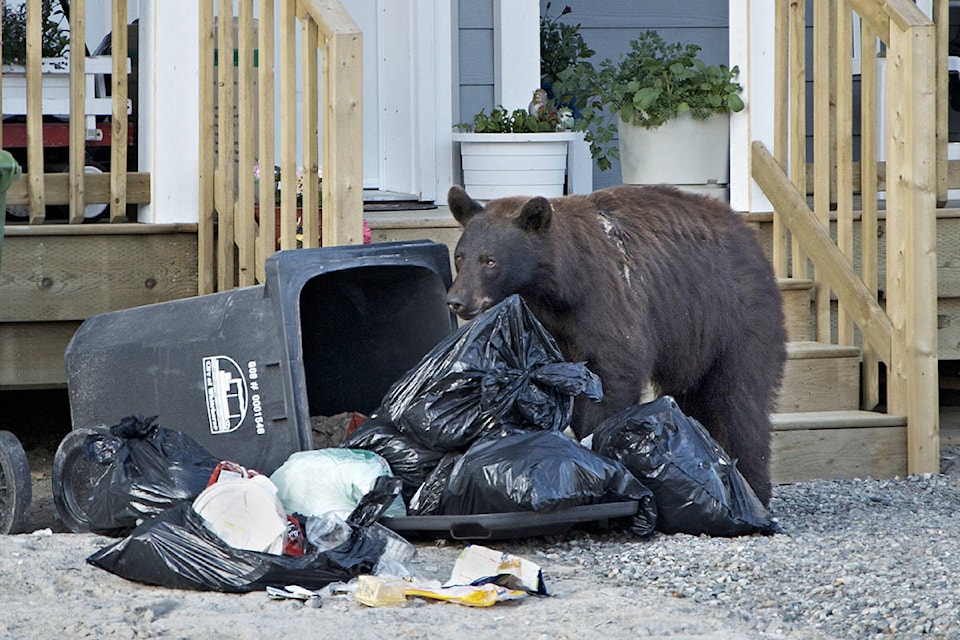Heather Ashthorn has been a staple at Whitehorse City Council meetings lately.
The executive director of WildWise Yukon says there are a number of tools and planning processes at the city’s disposal to help reduce conflicts between bears and humans. She wants to be there to speak about them.
In February, Ashthorn spoke to council more than once about two new garbage trucks the city plans to buy. She urged council to wait on the $619,000 purchase until WildWise finished a study (being done with the help of a city grant) to find out how other northern communities bearproof their waste.
Ashthorn’s concern is that the city may end up buying trucks that are incompatible with the garbage bins that have proven most successful in thwarting bears.
At the March 5 standing committees meeting, during discussion about the city’s waste management bylaw, Geoff Quinsey, manager of water and waste with the City of Whitehorse, said his department is waiting on the purchase of $100,000 worth of new bins until the city has made its decision on trucks.
Ashthorn also spoke that night. When Coun. Rob Fendrick asked about how many bears in Whitehorse were killed or destroyed in 2017, Ashthorn said that more than 60 were destroyed. She said there have been 289 encounters since 2012.
However, she told the News, those are only reported numbers. Many encounters go unreported. And often, she said, human garbage can be a major factor in those encounters.
It’s not just at the individual level either. She says there’s also a place for that kind of planning and mitigation in the Parks Master Plan, which will be presented to council in late June or early July.
The plan, last updated in 2007, is going through a review right now.
“With the parks plan, there is potential to recognize that’s space we share with widlife,” Ashthorn told the News.
If the city doesn’t address human/wildlife conflict in the plan, she says it will be a missed opportunity.
“We probably won’t revisit the plan for 10 years,” she said.
Doug Hnatiuk, manager of parks and community development with the city of Whitehorse, says his department is looking at the plan “at that 40-foot level.”
“It talks about principles and benefits of recreation and values and things like that,” he said. “And so when we talk about bear awareness that’s absolutely something that our department takes seriously now. We’ve already been working with WildWise to take steps toward mitigating negative interactions.”
He said some of these steps include bearproofing garbage cans at parks and in open spaces (though Ashthorn says a number of locks on the bearproof bins in the city have been disabled. Hnatiuk said he doesn’t know anything about that).
“Last year myself and some of our staff from our department participated in a bear awareness workshop and from that, there were initiatives brought forward that the city could consider,” he said. Some of these include how to strategically locate appropriate disposal containers in green areas where people my congregate, and where to locate fruit-bearing shrubs within urban landscapes.
That’s another of Ashtorn’s concerns.
She said the city’s urban food strategy, which was meant to be ready in the spring, will add another layer of attractants to the city, potentially in the form of chicken coops and beehives for honey production.
She suggested the urban food strategy needs to include a provision about electric fences, or other deterrents to keep bears away from those supplies.
“Now is the time to anticipate, that those occurrences are going to increase and to try and define at a community level, what’s our tolerance?” she said. “Is it OK that 10 bears got into chicken coops in the last seven years?”
She said council needs to look at the bigger picture. If there are more bear encounters in Copper Ridge, for example, a recommendation to focus on curbside collection in the neighbourhood may only push the problem to other areas.
“That’s convenient and great (for Copper Ridge) but the problem will move,” she said. “Bears are all over and are opportunistic and adaptable and tolerant of people.… They’re not just going to sit there and starve.… Quality habitat is not an issue for Yukon bears.”
Contact Amy Kenny at amy.kenny@yukon-news.com
